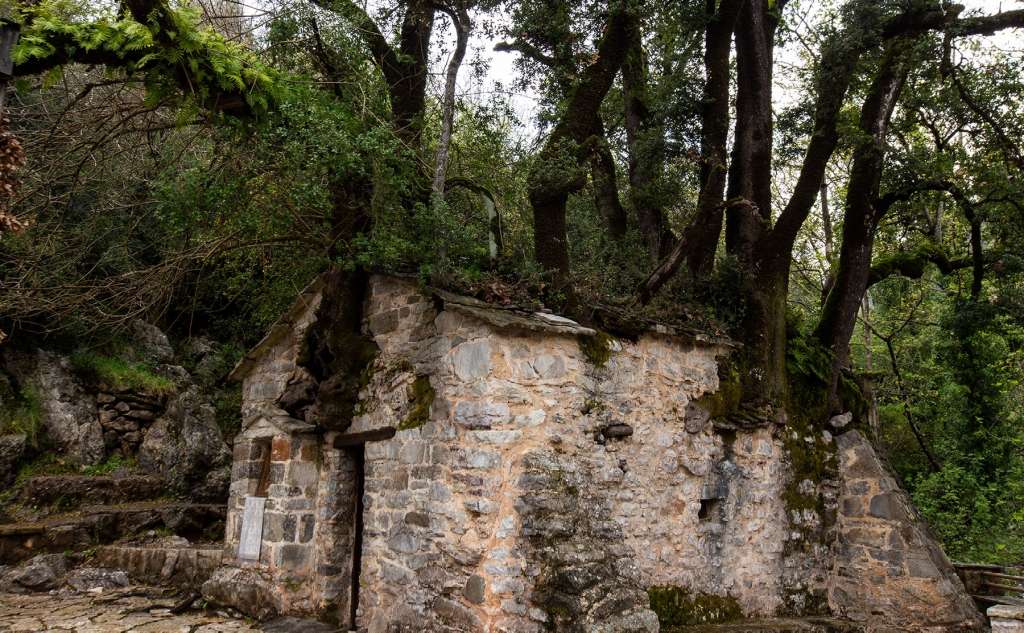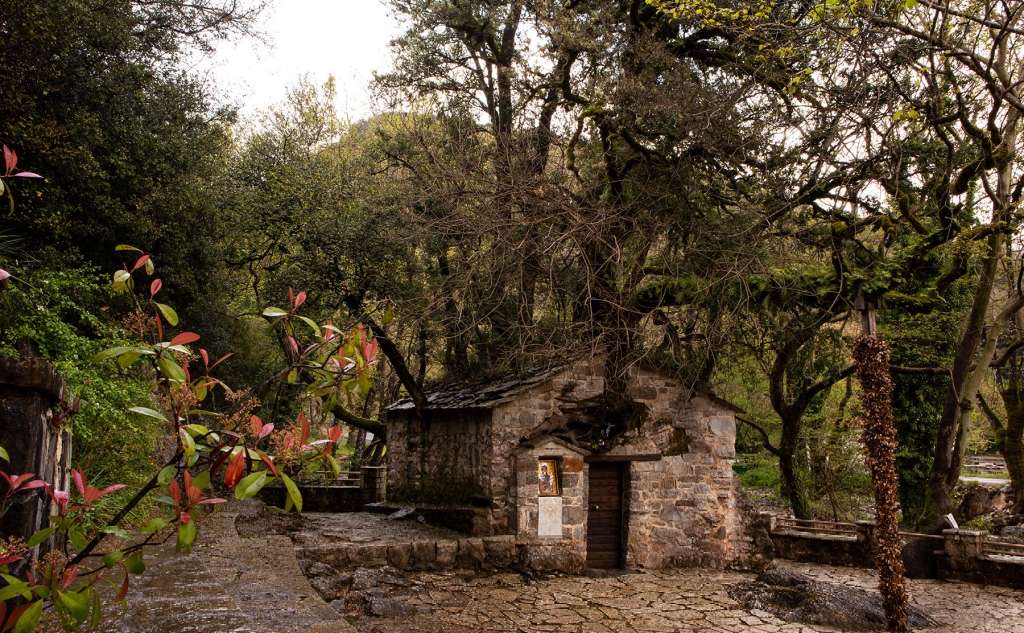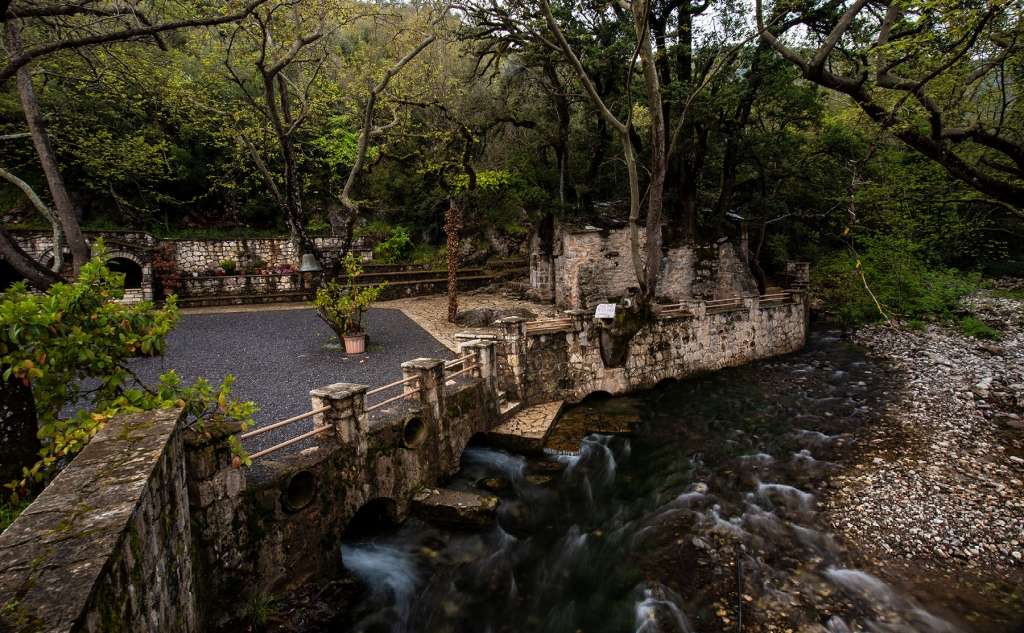Agia Theodora
The church of Agia Theodora is located near the village of Vasta on the borders of the Prefectures of Messenia and Arcadia, in a verdant ravine with a dense forest of giant oak trees. It is a remarkable sight and a wonder of nature that cannot be scientifically explained.
According to one theory, Saint Theodora was Augusta Theodora, daughter of Emperor Constantine VIII of the Macedonian dynasty, who is said to have reigned as a male from 1055 to 1056. According to the claims of Michael VI Stratiotikos, Augusta Theodora fell seriously ill and died, while others speculate that he killed her himself. According to tradition, Saint Theodora lived in the village of Vasta. At the age of 17, to cover her family obligations, she disguised herself as a man and enlisted in the Byzantine army as "Captain Theodore". In the military, following a conspiracy, she was wrongfully accused of unlawful acts and was executed by her persecutors. Shortly before she was executed, she prayed to say: "...Lord, make my body a temple, my hair trees that testify to your protection in my purity and my blood water to water them. Amen".
The Byzantine chapel of Agia Theodora (4 metres wide and 5 metres long) was built around the 12th century (1050-1100), where her remains were transferred and buried. Hollies, maples, chickpeas, and then 17 oaks (each 20 metres high) grew on the temple's roof. The roots of the trees are not visible either inside or outside the small church. From the temple’s foundations, the Haradros river originates, which, a few kilometres further down, meets the Pamisos river. The temple celebrates September 11th, and thousands of pilgrims visit it every year. Until 1952, the memory of the holy martyr was celebrated the first Tuesday after Easter for reasons not saved by tradition.
In 1996, the Geophysics Laboratory of the University of Patras was invited by the Directorate of Restoration of Byzantine and post-Byzantine Monuments to study the preserved Byzantine building so that the Directorate could then proceed with its restoration. During the life of the temple, the monument has undergone many unprofessional interventions, resulting in its architecture being destroyed. From 1998-1999, after the completion of the study, restoration work was carried out in the church of Agia Theodora, during which the masonry was cleaned and pointed without cementing so that the roots of the trees would not dry out, while a slate roof was installed. Also, to protect the frescoes from moisture, the roof was cleared of layers of soil and leaves, and a tarpaulin with a collar was placed, with great care, around each trunk to minimise moisture passing under the trees.
The Byzantine church of Agia Theodora holds a place in the Guinness Book of Records as a "wonderful naydrium (small chapel)". Finally, at a distance of 500 metres from the temple is the "Neromylos" site, where there used to be a watermill. Today, a traditional restaurant operates in the building, the owners of which have restored its mechanism, so the watermill works normally.






